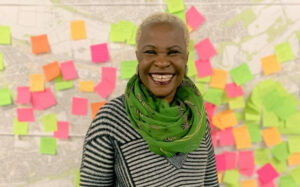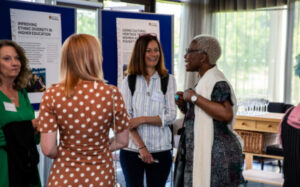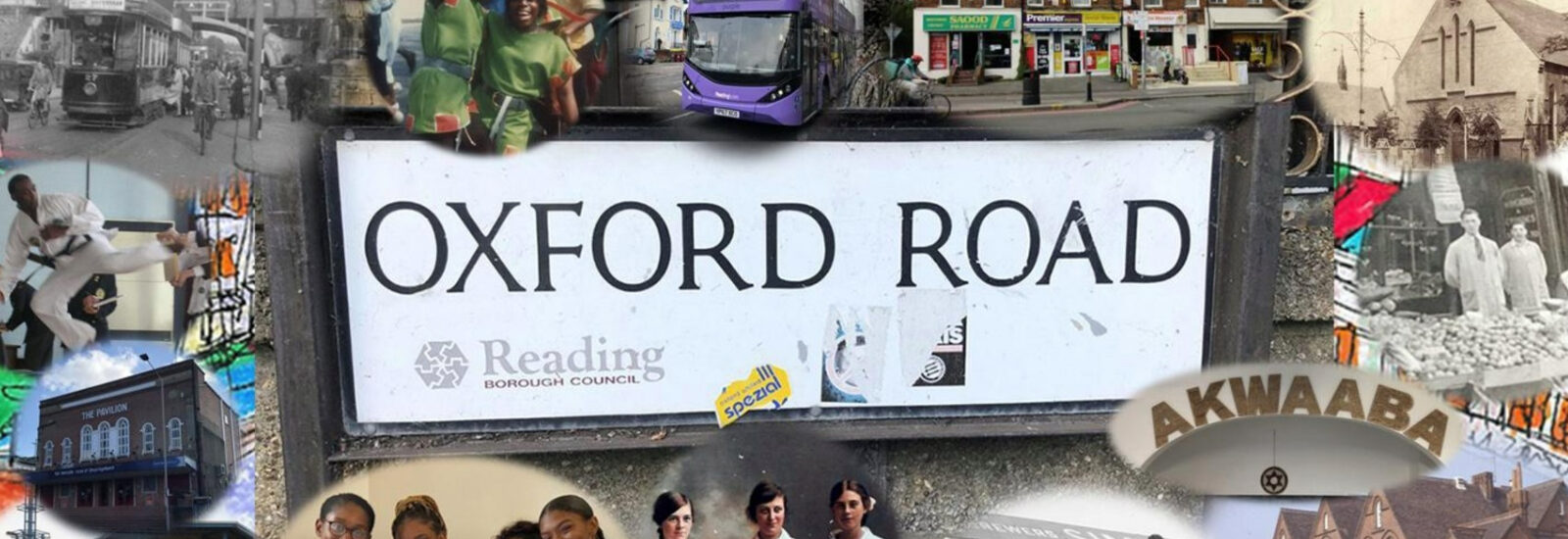CONNECTED speaks to Alice Mpofu-Coles, one of the University of Reading’s researchers who helped curate the exhibition that is uncovering stories from one of Reading’s most diverse and multicultural streets.
Oxford Road in Reading is home to residents who can trace their roots to all corners of the globe. With more than 70 languages spoken in the local vicinity, the road’s rich and vibrant cultural history is being celebrated and preserved through a participatory community storytelling project.
 The participatory project began in 2020 as a pilot project, through Reading Borough Council’s Historic England High Street Heritage Action Zone (HSHAZ) funding, the output of which created ‘Oxford Road online stories’ which is now at Reading Museum. In 2022, Reading Borough Council received further funding from Historic England after the pilot project’s success.
The participatory project began in 2020 as a pilot project, through Reading Borough Council’s Historic England High Street Heritage Action Zone (HSHAZ) funding, the output of which created ‘Oxford Road online stories’ which is now at Reading Museum. In 2022, Reading Borough Council received further funding from Historic England after the pilot project’s success.
This funding enabled the commissioning of Baker Street Productions to partner with University of Reading Human Geography researchers to produce an audio-visual exhibition – The Lifespring Stories. The large volume of research output which was created toured libraries – including the University of Reading Library – and is now permanently co-located at Reading Museum and at Lifespring Church.
The United Nations of Reading
The Oxford Road Project – Reimagining The High Street Through Your Stories – is a new community exhibition curated by the High Street Heritage Action Zone (HSHAZ) team in partnership with the University of Reading. The exhibition brings to life the history of Oxford Road and its community through a multimedia exhibition that includes interviews, photographs, artwork, recipe cards and podcasts.
 Alice worked alongside fellow University of Reading researchers, Robyn Woronka (Human Geography) and undergraduate architecture student Toby Barlow. Together, they learnt about the historic buildings and social history of the area whilst gathering photographs, memories and stories from local residents, to co-create a multimedia online storytelling exhibition for Reading Museum. The stories shared vary from musicians, martial arts teachers, and business owners to memories of visits from King George VI to the arrival of the Windrush generation in the UK.
Alice worked alongside fellow University of Reading researchers, Robyn Woronka (Human Geography) and undergraduate architecture student Toby Barlow. Together, they learnt about the historic buildings and social history of the area whilst gathering photographs, memories and stories from local residents, to co-create a multimedia online storytelling exhibition for Reading Museum. The stories shared vary from musicians, martial arts teachers, and business owners to memories of visits from King George VI to the arrival of the Windrush generation in the UK.
Alice said: “We spent time on Oxford Road speaking with people, on the streets, in cafes and in shops. Hearing stories about why they live in Reading, why they moved there and why they love it. There are so many different languages and accents that you hear when you step onto the streets: Irish, Scottish, Polish, Patwah, Tamil, Afrikaans, Hindi. It’s a really special place that brings people together. I call it the United Nations of Reading.”
Change for the community
Alice and the team, led by Professor Sally Lloyd-Evans as part of the HSHAZ programme, used participatory action research methods during the Oxford Road project. The aim of such an approach was to explore the lived experiences of the people and communities who live, work and play on Oxford Road.
Alice – who is an advocate for changing the way we collect data – explained the importance of participatory research. She said: “Everything we do is with them and for them. Participatory research means that we get to know people, we walk the streets with them and talk, we eat with them, we get to know their culture, their day-to-day, and we really get to know their stories instead of just asking them a list of questions.
“It builds trust but also presents a human side to data and demonstrates, from living voices, the inequalities that people experience.
“It’s not just the voice of academia conveying the information. This type of data collection enables the authentic voices of people to be heard – for their stories to be told, unedited, and as they were intended.“ The exhibition saw positive reactions not just from the Reading community but from the participants who were excited to have a chance to bring about change for their community and to finally have their voices heard.
Alice explained: “Many of the participants have never been asked to tell their story before, and yet they found themselves being interviewed by the BBC. Having the opportunity to be heard and being told that their voices matter has been a very poignant experience for those involved.
“The exhibition also brings about action because it is these people who say ‘This is what we want’ and it lets the wider community know what is required to make a change.”
Changing negative perceptions
Reimagining The High Street Through Your Stories has supported and inspired further projects that celebrate the extensive history and diversity of Oxford Road. The Oxford Road mural is one example, which can be seen on the railings of the Battle Street car park. Created by Gemma Anuse, the large-scale painting, Through Your Eyes, was created using a gradient of skin tones and includes quotes from people in the area embedded in the face of the art. Much like the exhibition, the mural aims to celebrate the road and change the negative stigma that has been attached to the area by breathing new life into the streets with art.
Of the stigma that surrounds the road, Alice said: “The Oxford Road is both infamous and famous. People have this assumption that it is rough, dangerous and that the people who live there are uneducated. I often hear from people, who are not from Reading, that they want to visit for things like the shops that specialise in foods from around the world but they have been warned against going there.
“In every town or city there is a road like Oxford Road, it might not be exactly the same or the same size, but it is there.
“It’s relevant and it is important that we celebrate it and move away from this negative view. There are so many people who live on Oxford Road: professors, professionals, and creatives, young and old, people who have lived through tough experiences and come out of the other side. The place is historic and cannot be stereotyped to one type of person. It’s a bubble of everything in one place and that itself is inspirational. I encourage everyone to visit Oxford Road.”
The project has significantly strengthened Reading’s existing community networks, while providing the foundation for further student-community research training and collaboration with local organisations and the arts sector. Alice hopes the exhibit will continue to grow and with the right funding it can support their further plans for the project. These include the creation of a series of digital teaching resource materials online for school children, university students and other professionals, and research to explore the global foods available across the road’s diverse restaurants and shops.
The exhibition can be viewed virtually on the Reading Museum website and now in-person in its permanent residence in Reading Museum and the Lifespring Church. Works from the exhibit can be found showcased at the Reading Biscuit Factory.
Alice is also part of the upcoming community led research workshop, run by Professor Adrian Bell. The interactive session on 7 June 2023 aims to bring together University of Reading participating and community led researchers and community partner groups. The event is open and free to all but participants need to register to attend.




